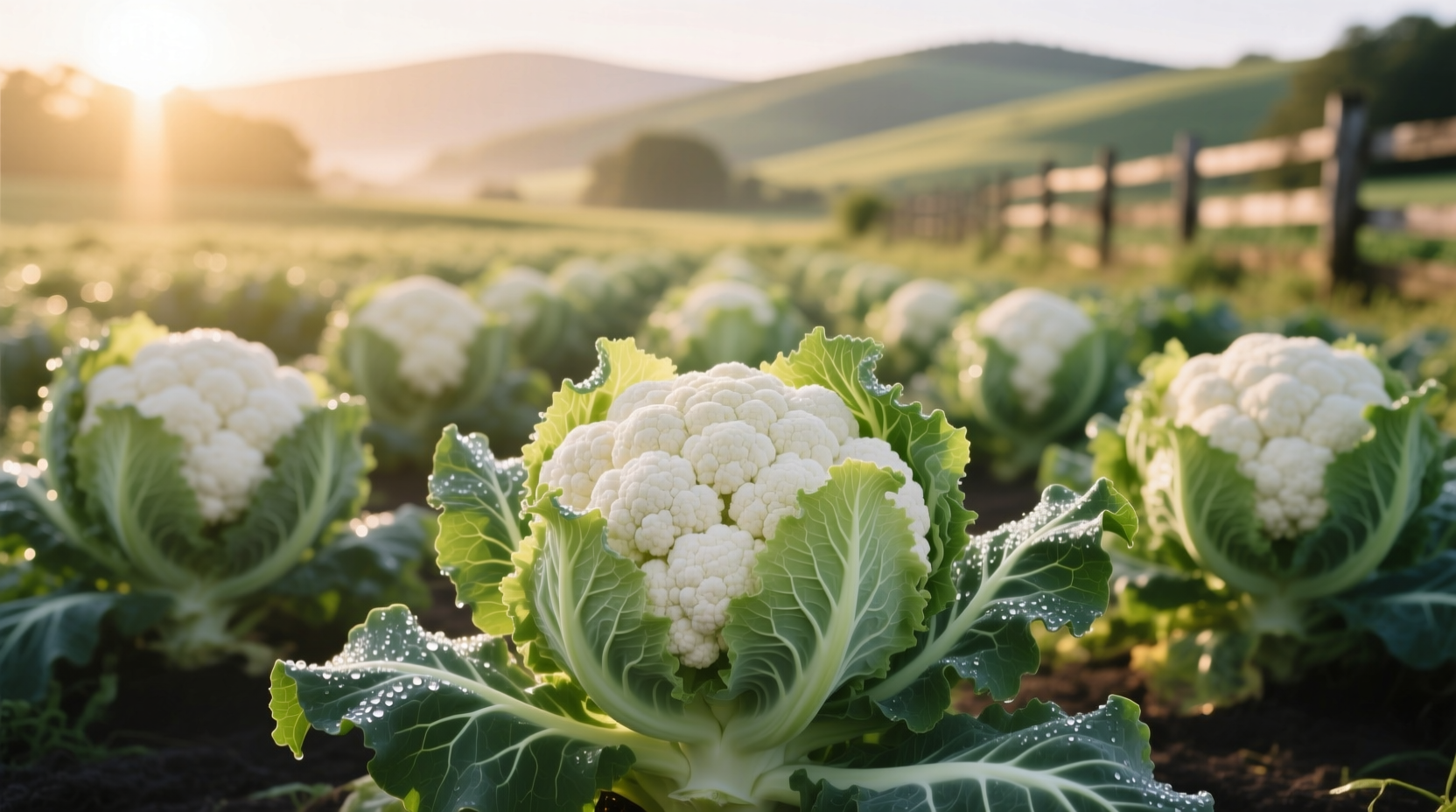Discover the secrets to growing crisp, flavorful cauliflower with this comprehensive guide. Whether you're a beginner gardener or looking to improve your harvest, you'll learn proven techniques for soil preparation, pest management, and harvesting that deliver restaurant-quality results from your backyard.
Why Cauliflower Challenges Even Experienced Gardeners
Cauliflower (Brassica oleracea var. botrytis) presents unique growing challenges compared to other brassicas. Unlike hardy broccoli, cauliflower demands precise temperature control and consistent moisture to prevent common issues like buttoning (tiny premature heads) or riceyness (granular curds). Understanding these specific requirements separates successful harvests from disappointing results.
Optimal Growing Conditions for Healthy Plants
Cauliflower thrives as a cool-season crop, making spring and fall planting ideal in most regions. The University of California Agriculture and Natural Resources confirms that temperatures above 80°F cause curd discoloration and poor head formation, while frost below 28°F damages developing plants.
| Growing Factor | Optimal Range | Problem Signs |
|---|---|---|
| Soil pH | 6.0-7.5 | Yellowing leaves, stunted growth |
| Soil Temperature | 50-80°F at planting | Poor germination, buttoning |
| Air Temperature | 60-70°F ideal | Discoloration, riceyness above 80°F |
| Water Needs | 1-1.5" weekly | Buttoning, hollow stems with inconsistency |
Step-by-Step Planting Guide
Follow this planting sequence for maximum success:
- Start seeds indoors 4-6 weeks before last frost date (soil temp 70-80°F)
- Transplant seedlings when 4-6" tall with 4-5 true leaves
- Space plants 18-24" apart in rows 30" apart
- Apply mulch after soil warms to maintain moisture
- Begin blanching when curds reach 2-3" diameter
According to the USDA Plant Hardiness Zone Map, gardeners in zones 3-9 can successfully grow cauliflower with proper timing. Northern gardeners should plant for a fall harvest, while southern regions succeed with winter crops.
Essential Care Practices for Quality Heads
Consistent care makes the difference between mediocre and exceptional cauliflower:
Water Management
Maintain even soil moisture—fluctuations cause buttoning and hollow stems. Drip irrigation delivers the ideal 1-1.5 inches of water weekly directly to roots. During head formation, increase watering to prevent stress-induced discoloration.
Blanching Technique
For pure white curds, tie outer leaves over developing heads when they reach 2-3 inches wide. The University of Minnesota Extension recommends checking tied plants every 3 days, as heads grow rapidly in ideal conditions. Skip blanching for colored varieties like purple or orange cauliflower.

Common Problems and Organic Solutions
Address these frequent cauliflower challenges with proven methods:
Pest Management
Cabbage loopers and aphids threaten young plants. Instead of chemical pesticides, try these effective organic controls:
- Row covers installed at transplanting prevent most pests
- Neem oil applications every 7-10 days control aphids
- Hand-picking caterpillars in early morning reduces damage
- Companion planting with thyme or sage deters pests naturally
Disease Prevention
Clubroot and black rot spread through contaminated soil. Prevent these issues by:
- Rotating brassicas every 3-4 years
- Removing plant debris after harvest
- Testing soil pH annually (clubroot thrives in acidic soil)
- Using disease-resistant varieties like 'Snow Crown'
Harvesting at Peak Quality
Harvest when curds are 6-8 inches wide, firm, and compact. Use a sharp knife to cut 1-2 inches below the head. Morning harvests yield the crispest texture. Store unwashed heads in perforated plastic bags in the refrigerator's crisper drawer for up to 2 weeks.
For continuous harvest, plant multiple varieties with different maturity dates. Early varieties like 'Snowball' mature in 55-60 days, while late-season types such as 'Graffiti' take 80-100 days, extending your harvest window.
Regional Growing Considerations
Your location significantly impacts cauliflower success:
- Northern climates: Plant spring crop 4-6 weeks before last frost; fall crop 8-10 weeks before first frost
- Southern regions: Plant October-November for winter harvest; avoid summer planting
- Coastal areas: Take advantage of mild temperatures for year-round growing
- High altitude: Choose fast-maturing varieties due to shorter growing seasons
The Cornell University Gardeners' Resource emphasizes that microclimates within your garden matter—plant cauliflower on north-facing slopes in warm regions to keep roots cooler.
Troubleshooting Guide
Quick reference for common issues:
| Problem | Most Likely Cause | Solution |
|---|---|---|
| Small button-sized heads | Temperature stress or inconsistent water | Improve irrigation consistency; provide shade during heat spikes |
| Yellow or brown curds | Inadequate blanching or sun exposure | Tie leaves over heads when 2-3" wide; harvest before full maturity |
| Hollow stems | Nitrogen imbalance or water fluctuations | Apply balanced fertilizer; maintain even soil moisture |
| Loose, granular curds | Temperature extremes during head formation | Choose heat-tolerant varieties; provide afternoon shade |











 浙公网安备
33010002000092号
浙公网安备
33010002000092号 浙B2-20120091-4
浙B2-20120091-4